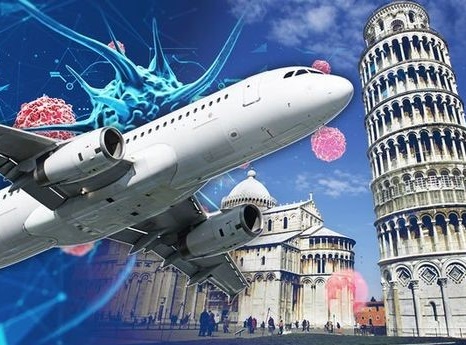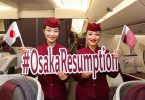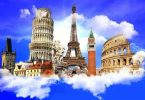The hotel, travel and tourism industry contributed to the spread of the COVID-19 pandemic, most notably cruise lines and airlines; however large their role, these enterprises cannot be held accountable for its origin or for the irresponsible approach of governments and global health agencies to the identification, mitigation, control, and elimination of the virus.
First Hide, Then Stumble
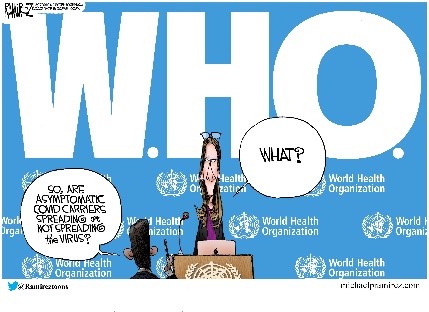
From the first identification of the virus by Chinese scientists, to the acknowledgement (but secrecy) of the Chinese government to the serious missteps of the World Health Organization, this virus has created health and economic crises not experienced for over 100 years. Leaders of many nations took, and continue to take, a frivolous look at the virus research and statistics. World leaders, like Donald Trump, prefer to ignore the virus, believing that it will go away on its own accord. From January through early March, Trump repeatedly claimed that the virus was “under control” and would “disappear” in warmer months and he continues to believe it will disappear and/or has already vanished.
playht_player width=”100%” height=”175″ voice=”Noah”]
Trump is not alone in practicing the art of Magical Thinking. In Brazil, President Jair Bolsonaro compared the virus to a cold, and challenged the validity of social distancing. The Iranian President, Hassan Rouhani, told his country not to worry about the virus claiming the problem remained with the Chinese and would not infect them to the point of boasting about sending face masks to aid China. The Prime Minister of Italy, Giuseppe Conte, minimized the virus in February and the Italian foreign minister, Luigi Di Maio, accused the media of spreading false information about the virus. Italy became the third most infected country and the epicenter of the deadliest outbreak on the world (April 10, 2020). The President of Mexico, Andres Manuel Lopez Obrador, ignored the warning and encouraged his citizens not to succumb to the “fear or psychosis,” blaming the media for stirring unrest through the dissemination of fake news. To add insult to injury, the President assured his Mexican citizens that the country had all the medical supplies and hospital beds it needed; however, a report found that Mexico had fewer nurses and ICU beds per capita than Italy, South Korea and the US. It was not until April that Lopez Obrador shut down the country and closed the borders. The Prime Minister of Spain, Pedro Sanchez, discredited the news and permitted large gatherings to proceed in sports stadiums and rallies to the point where 120,000 were allowed to gather at a feminist rally in Madrid in March. Prime Minister Boris Johnson and his team believed the virus was a “moderate risk” through late February and lagged in their decision to impose a national lockdown.
The absence of leadership has created global crises that appear to be uncontrollable without viable remedies or solutions readily available (Data: as of October 25, 2020; www.google.com/search)

Tourism Sinks
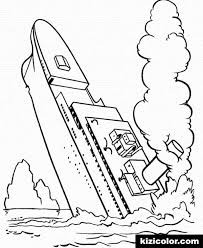
Although the virus was identified in China in November/ December 2019, restrictions on travel were not imposed until March 2020, with international travel finally stopped in April and May. The result? The World Tourism Organization (WTO) estimates that international tourism receipts (i.e., spending by international tourists) will decrease between $910 million – $1.2 trillion (2020), setting the global tourism industry back by 20 years (weforum.org). Tourism impacts on society, contributing positive and negative outcomes with the undesirable effects intensified during crises and adversity. Because a large swarth of the world economy is based on tourism, pandemics and other health emergencies interfere with the social and economic welfare of local citizens as well as global partners.
COVID-19 traversed the planet with the aid and assistance of cruise lines, airlines, airports, public transportation as well as hotels, convention centers, restaurants and other segments of the tourism industry. While countries benefit from inbound tourism, they also bear the burden of dealing with the spread of COVID-19 from visitors who interface with local citizens and business owners. Visitors who are ill and/or infect others put pressure on local healthcare, public safety and security systems, increasing costs (personal and financial) to the community.
America Does Not Measure UP
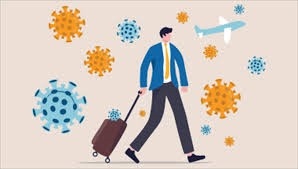
When the US government halted foreign nationals traveling from China to the USA on January 31, 2020, the response was unsatisfactory because it was merely a gesture and not part of a global strategy. The directive had fits and starts enabling 381,000 people to enter the USA from China in January, including 4,000 form Wuhan. Passengers continued to flow unimpeded to the USA from countries facing serious outbreaks (i.e., Italy and Spain) through February and early March. Health screenings at airports were mostly public relations efforts with few (if any) services in place.
Not a Surprise
Public and private sector executives reacted to the coronavirus as if it were a surprise, despite the almost 2-month warning from the time it first appeared in China and moved rapidly through the world; however, if we are going to actually touch base with reality, the pandemic was forecast years before this 2019/2020 crisis surfaced.
In May 2003, the Government Accountability Office (GAO) reported that, in regard to SARS and future pandemics there were gaps in disease surveillance systems and laboratory facilities as well as a workforce shortage, and “few hospitals have adequate medical equipment, such as ventilators…to handle large increases in the number of patients…”
In 2005 the Department of Health and Human Services (HHS) published a 400-page Pandemic Influenza Plan. Reviewing models based on flu pandemics (1957, 1968) and calculated that there would be over 900,000 hospitalizations under similar situations. HHS determined there would be an increased demand for inpatient and intensive care units and assisted ventilation services by an excess of 25 percent. This report was followed by other GAO (2005/2006) reports that warned, “few hospitals reported having the equipment and supplies needed to handle a large-scale infectious disease outbreak.”
In 2006, the Congressional Budget Office report found that the US had only 100,000 ventilators, with ¾ in use on any given day and HHS calculated that, “a severe influenza pandemic…like …1918..would require 750,00 ventilators to treat victims.”
President George W. Bush’s White House (2001-2009) determined that a severe influenzas pandemic would put a burden on the healthcare system and in 2007, the Interior Department issued a Pandemic Influenza Plan again highlighting the shortage of ventilators. In 2009, the Occupational Safety and Health Administration (OSHA) predicted that, in the event of a pandemic, healthcare facilities would be overwhelmed, citing a shortage of hospital staff, beds, ventilators and other supplies.
President Barack Obama’s Council of Advisors on Science and Technology (2009) found that during a peak of H1N1 flu, 1 out of 2 American might be hospitalized with patients needing mechanical ventilation and therefore 50 – 100 percent (or more) was necessary (medicalcountermeasures.gov).
Private and public sector world leaders continue their Magical Thinking, extending it to the refusal to organize masks, gloves and hand sanitizers for healthcare providers and medical teams, telling professionals, state and city officials as well as the public, that there is no need to worry, the virus will vanish; however, even if it does not disappear, there are enough supplies to address the issue. Most recently, Mark Meadows, the White House Chief of Staff declared, that the US is “not going to control” the coronavirus pandemic as cases plow through the US (October 25, 2020). The current administration continues to disregard advice from government health professionals to wear masks, social distance and avoid large groups in an effort to stem the growing tide of sickness and deaths.
Tourism? Full Stop

Research suggests that the spread of infectious diseases (i.e., SARS, swine flu, and viral hemorrhagic fevers/Ebola virus), via human travel has emerged as the main risk to tourism because it leads to prohibitions on the international movement of people. COVID-19 spread through cruise ships in Japan, the US, Australia and France, resulting in the banning of cruise ships from docking at many ports. Unfortunately, due to the absence of savvy leadership, the response was not quick enough or thorough enough to stop the spread of COVID-19 to communities visited during shore excursions, and to other travelers as the cruise passengers passed through airports, flew on airlines, dined at restaurants, and accessed land transportation as they returned to their homes. To this moment, cruise line executives try to avoid the realities of COVID-19 and other virus infections onboard their vessels. It is estimated that approximately 200 people die each year on cruise ships (emmacruises.com/die-on-cruise-ships/) and this does not include the current COVID-19 pandemic.
Apparent, Perhaps
The pandemic has enhanced our collective dependence on government when “tough things” happen. Unfortunately, many governments have not been up to the task and millions of people are sick and dying needlessly while economies collapse. The COVID-19 pandemic crises demonstrates the outcome of failed leadership and the need to build a bond between the public and private sectors; however, what has not been determined is what roles and responsibilities each should have and how they should cooperate to protect the public against future health crises.
Imagination Failure
Current public and private leadership has not understood the fact that words matter and what is said, and the tone and method through which the message is sent, impacts on the message received and followed. The coronavirus has created havoc on a global scale, increasing uncertainty, elevating stress and anxieties. It has also aided tunnel vision, with people focusing on the immediate moment rather than looking toward a positive future. When crises occur and information is unavailable, inconsistent or not based on facts, when people are unsure and uncertain about what they know, or what others know, or what their leaders know, there is a huge desire for transparency, guidance and assistance in order to re-establish a sense of equilibrium; on a global scale, this management is not available.
Research provides evidence that during times of crises a leader’s words and actions can assist in creating a sense of safety, emotional energy for coping and placing the experience into context. We are in an unfortunate time where the information linked to public health and workplace safety, business continuity, job loss and radically different procedures for working, and living, (with no endpoint in sight), has not been guided by leaders with wisdom but rather by people who put personal aggrandizement above their responsibility to lead their constituents (or their employees) to the Next Normal. There is a growing number of people so numb by the current crises that they are not ready to find hope through any prism and lash out with aggressive behavior in order to find a link to reality.
At the Helm? No One!
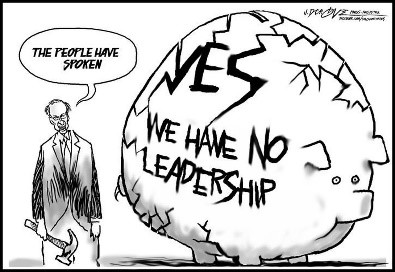
Although COVID-19 did not come with a Playbook there are certain basic guideposts that could have (should have) been followed, and, except in a few instances (i.e., New Zealand Prime Minister, Jacinda Arderm) were ignored. If there was ever a time for good public relations, this was (and is) the time to present the right message providing pandemic facts and informed risk assessment while directing people to a positive outcome. Instead of presenting the right message at the right time, elected, appointed and private sector executives have filled the airwaves with rumor, lies and half-truths, leading populations to sickness, lingering illness, and death combined with a sinking economy complete with huge unemployment, hunger and a failing health care system.
Important Messages
Government emergency public information should enhance the public’s courage and determination, raise their awareness of risk, and motivate people to adopt effective protections to fight the pandemic. Once the government of China acknowledged their crises, they actually did things correctly: provided detailed pandemic information, shared positive risk communication and refuted rumors. The Chinese COVID-19 information shared with the public provided statistics of confirmed cases, suspected cases, recovered cases, and deaths. In addition, the PRC disseminated accumulate data with daily updates, and they tracked travel history and trains or flights taken by specific confirmed or suspected patients and provided treatment and other support to these individuals.
Research confirms that accurate government emergency public information can offer a significant positive impact on protective behaviors. When the Chinese pubic was informed about the reality of the pandemic and what the government was doing about it, people followed the government’s recommendation. Unfortunately, the messaging does not work all the time. People may distrust the government if information has been (or is currently) being concealed or misrepresented and can, in fact, cause negative or hostile actions. It should come as no surprise that the current occupier of the White House has lost the trust of over 50 percent of the US population and most world leaders. It was reported in The Guardian (July 13, 2020), that “Trump has made 20,000 false or misleading claims…”
Oh, Woe Is Me

If we have learned nothing else from COVID-19, we have been awakened to the reality that societies, not just governments, need to anticipate issues, and through developing viable “what if” scenarios, be prepared for the unexpected. It is true that anticipatory policy making is expensive and it is time consuming; however, had governments and tourism executives had plans and policies in place, it is likely that current disasters would have been mitigated.
COVID-19 carnage continues worldwide but especially in the United States with deaths in the thousands and unemployment reaching +/- 32 percent. The US government has failed its citizens in a basic, fundamental way, protecting it from catastrophic danger. The virus was unleashed and through travelers reached world populations and tourism executives are absent from the table.
Even the best laid plans would not have stopped the pandemic; however, it is now clear that the federal government with its bungling and inept decisions turned a large-scale public health crisis into an unprecedented health, economic and security tragedy. Had cruise line and airline executives, as well as tour operators acknowledged the reality of the pandemic and addressed the virus when it first appeared, we would not be at the forefront of ruin.
It is likely that pandemics will be part of our future. The current government response, to do little and wait for it to kill off the weakest, does not appear to be a satisfactory response. Tourism leaders refuse to address their failures and continue to flood social media with videos and pictures of hotels with dancing waiters, attractive airline personnel carefully presenting cocktails to business class passengers and destinations portraying groups of happy guests (without social distancing or face masks) frolicking at the pool or laughing around a barbeque pit.
The pathway out of this quagmire is not clear. Tourism has been responsible for 10 percent of global GDP (2019) and valued at +/- $9 trillion with a large, fragmented and complex line of suppliers and intermediaries without coordination among the small and medium-sized enterprises (SMEs). Designing a pathway to recovery will not be simple or swift as there is a lack of leadership to spark and coordinate efforts.
What is likely to happen:
1. Tighter procedures – from presentation of negative COVID-19 tests, to other medical documents prior to departure.
2. Hygiene and sanitation will increase with hand sanitizers and face masks required from the beginning of the journey to the end.
3. Strict adherence to health protocols will be more important to travelers than attractive front desk employees.
4. State-of-the art HVAC systems and HEPA filters will take priority over a room rate.
5. Touchless technology, creating a hands-free environment, from document scanning and voice commands to motion sensors, visitors will embrace the opportunity to move through venues and spaces without human contact.
6. Travelers will move with caution and explore short, drive-distance destinations leaving long-distance holidays for a time when travel restrictions are removed.
What is Needed:

© Dr. Elinor Garely. This copyright article, including photos, may not be reproduced without written permission from the author.
#rebuildingtravel

